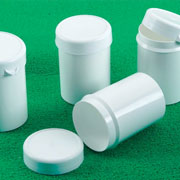What strategies can be used to develop children's independence in choosing and using science resources?
Here is a simple but effective approach that has been used in many schools, and works well for staff and children. This works even better when children are given 'special badges' which indicate their role, and as we all know, children love badges and rise to the occasion when given special responsibilities.
Click on the badges below for more information:
At Class Level
Each class has assigned 2 or 3 science monitors, who are in charge of making sure that all of the science resources are kept tidy and the teacher is told if any are missing or broken. Where appropriate, these children could also go to science resource areas e.g. central storage, and collect resources, take them to the classroom, then return them.
DON'T FORGET CHILDREN LOVE RESPONSIBILITY AND THEY LOVE BADGES
During 'Fair Test Investigations'
The biggest number of children for a group doing a fair test investigation is 4, so that everyone can have a role and a badge, for example:
- Fair tester
- Recorder
- Measurer
- Resource Manager.
The Resource Manager is in charge of resources, gets them out, puts them away and makes sure that they are not lost and are used correctly.
DON'T FORGET CHILDREN LOVE RESPONSIBILITY AND THEY LOVE BADGES
At whole school level
Each class has a resource manager.
A group of monitors from upper primary classes have the special role of:
- checking and keeping tidy science resources regularly weekly;
- telling the science leader / coordinator what is missing, broken etc.
- auditing resources each term.
Towards the end of the school year, the oldest children, who will probably be moving on to secondary school, train up new monitors to take their place.
DON'T FORGET CHILDREN LOVE RESPONSIBILITY AND THEY LOVE BADGES
Quick ideas for supporting children in choosing equipment
Some children will need help in choosing equipment in science, there are a number of ways that the teacher can support children without actually giving them the required items, for example, put out a selection of resources:
- that children could use but with one or two red herrings, for children to choose from;
- where different types of measuring equipment, for example, a clock, tape measure, capacity container, where it is very obvious what the choice should be;
- to challenge children, where the equipment is all related to one aspect of measurement, for example, capacity, and children have to consider the amount they need to measure and which container is appropriate.
- give children time to carry out a 'trial' run, so that they can choose and use equipment and then make changes if they do not think the equipment is appropriate.
Towards the end of the school year, the oldest children, who will probably be moving on to secondary school, train up new monitors to take their place.
DON'T FORGET CHILDREN LOVE RESPONSIBILITY AND THEY LOVE BADGES
- What level of responsibility should children have for science resources?
- What level of responsibility should staff have for science resources?
- How do I set expectations in a school?
- What strategies can be used to develop children's independence in choosing and using science resources?
- How will I know who has borrowed which resources and what is lost or broken?
- Helping hands

Use small plastic pots to make mini volcanoes, put an aspirin or Alka-Seltzer tablet in a small amount of water in a pot, put the lid on and wait until the gasses pop the lid off. SAFETY - make sure children stand back.
Flash is required to use this part of the website.
Click for a hot tip



